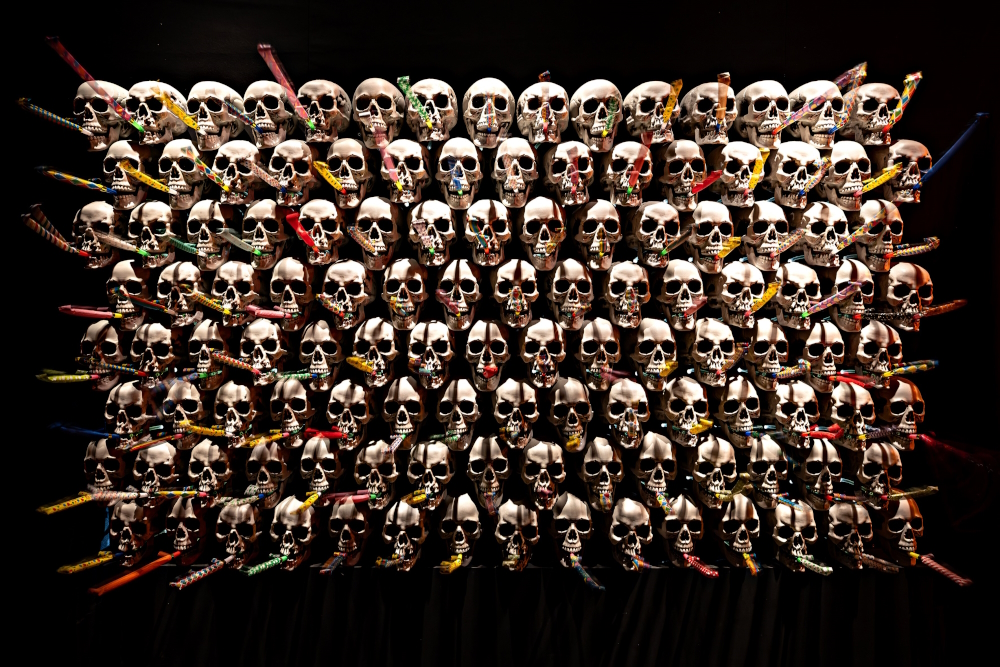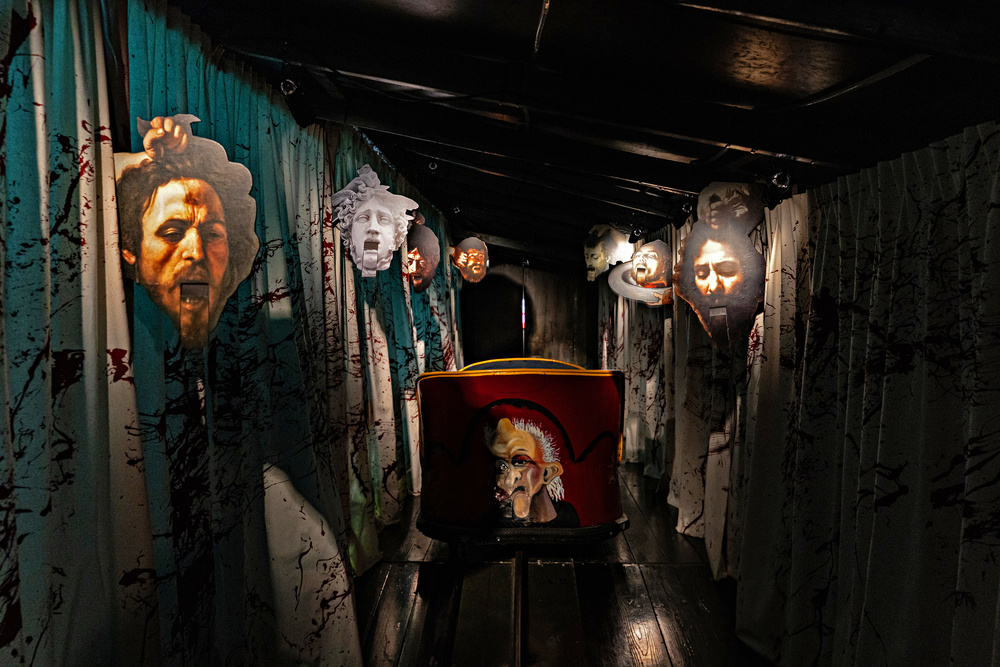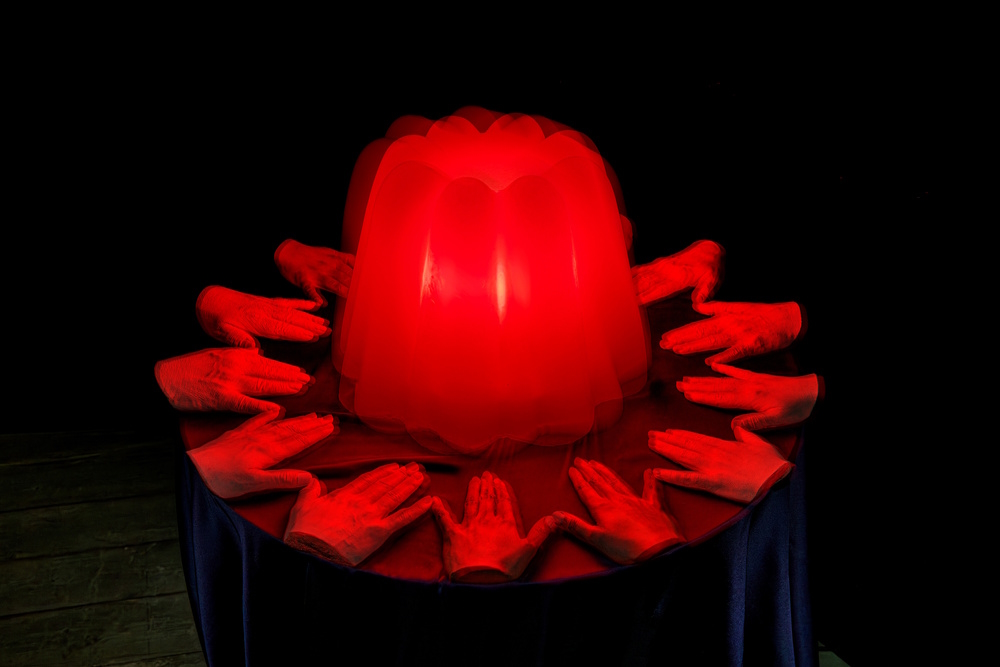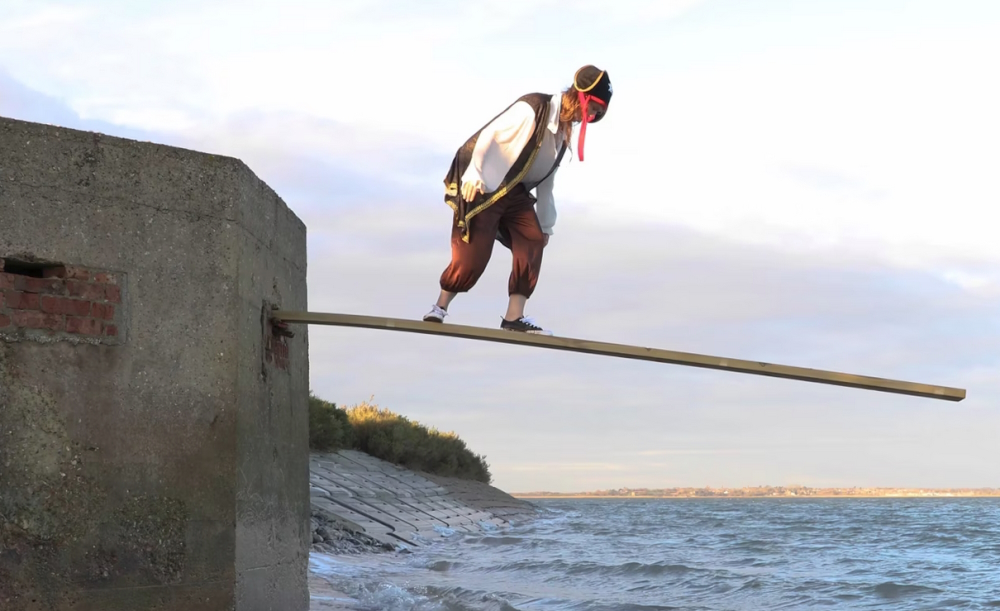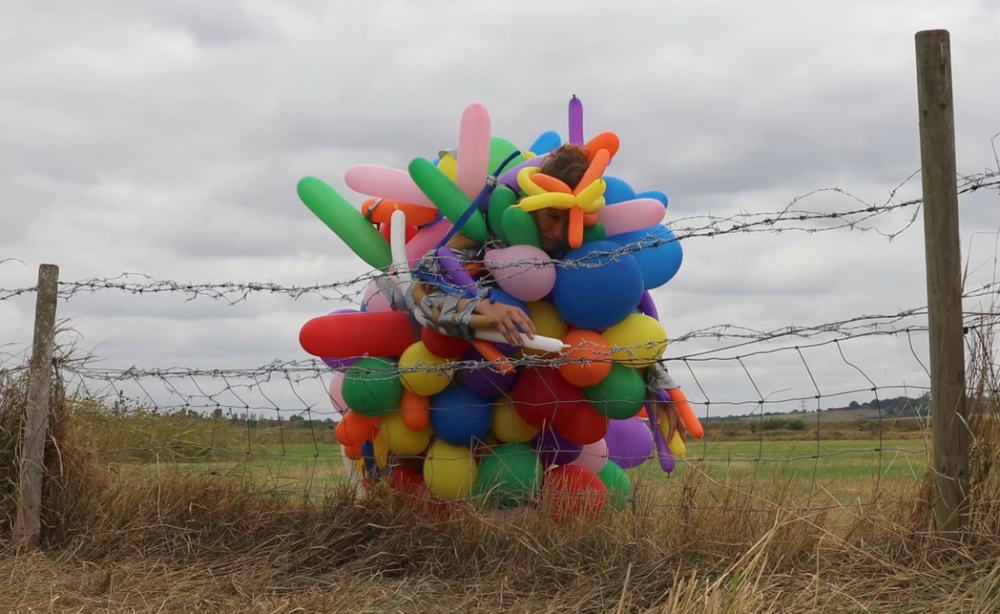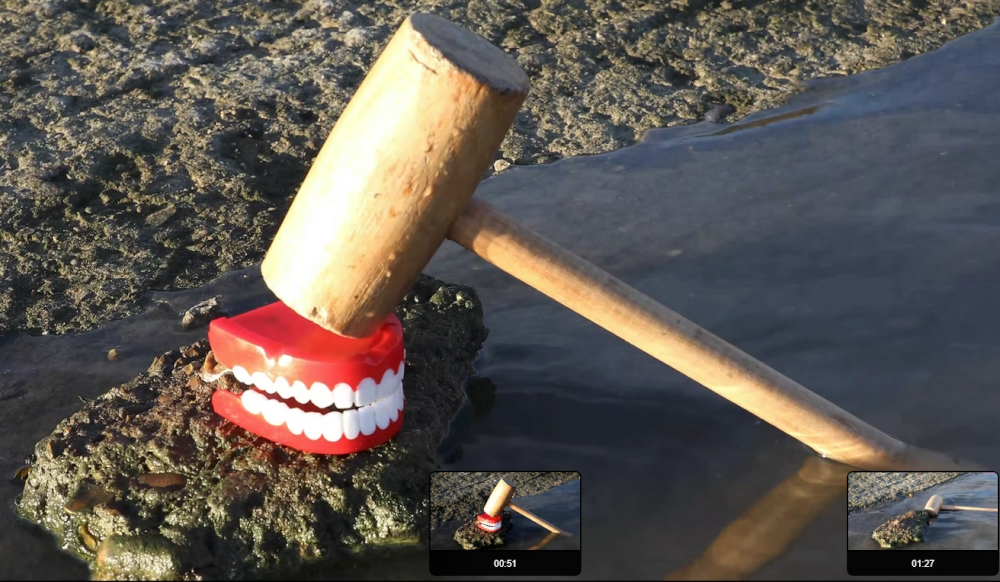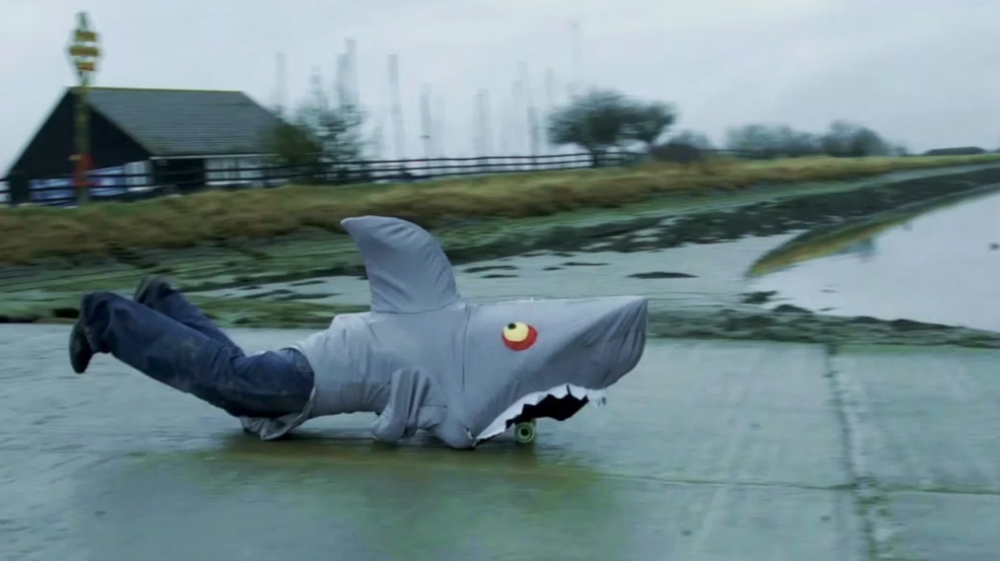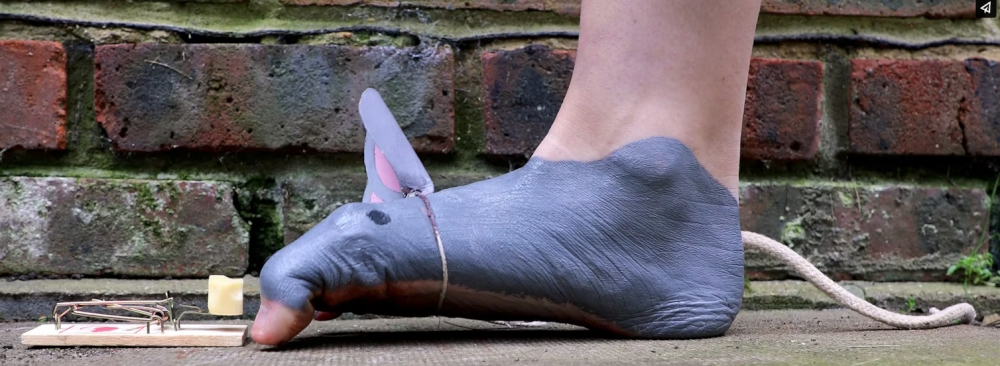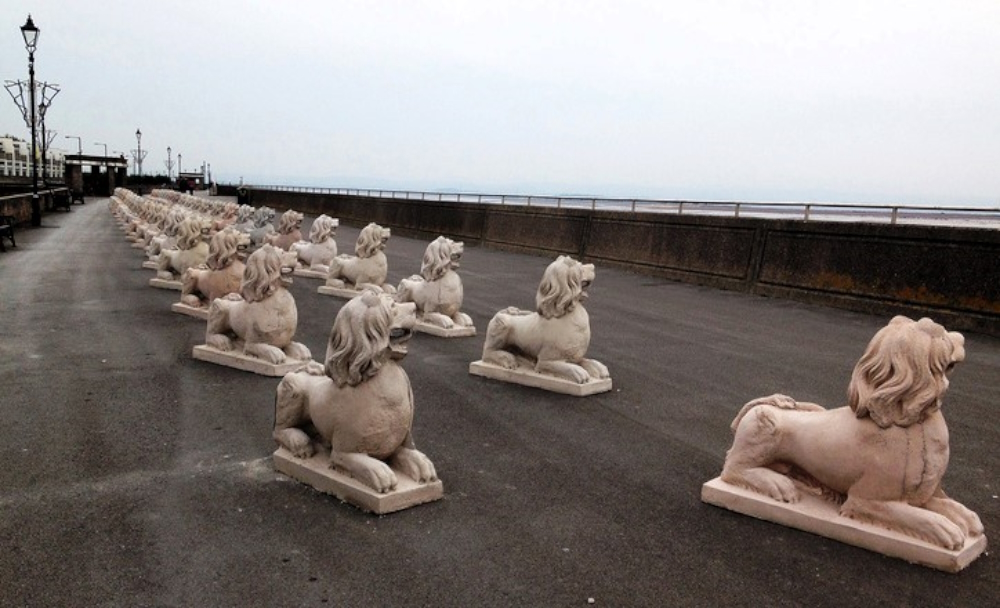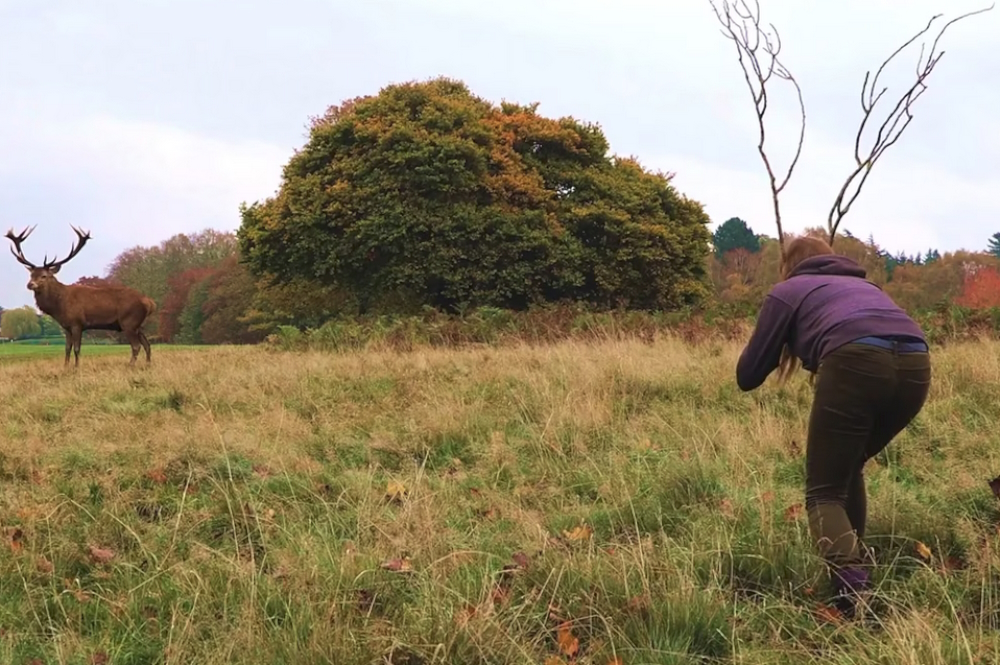Rebecca Moss
sculptor / video- / performance- / installation-artist
UK
Co-creator of the art ghost train installation, ‘Scream Machines’ paying homage to the Swiss artist Jean Tinguely (1925-1991), known best for his kinetic art, on the occasion of his 100th birthday in 2025. Receiver of numerous grants like the prestigious Henry Moore Foundation Artist Award. Nominated to propose an artwork for The High Line Plinth in New York. These are some notable highlights for a special artist, who made international news when she was artist-in-residence on board of a container ship that, en route from Vancouver to Shanghai, was refused entry to ports because of the South Korean owner company’s bankruptcy!
Rebecca Moss
sculptor / video- / performance- / installation-artist
UK
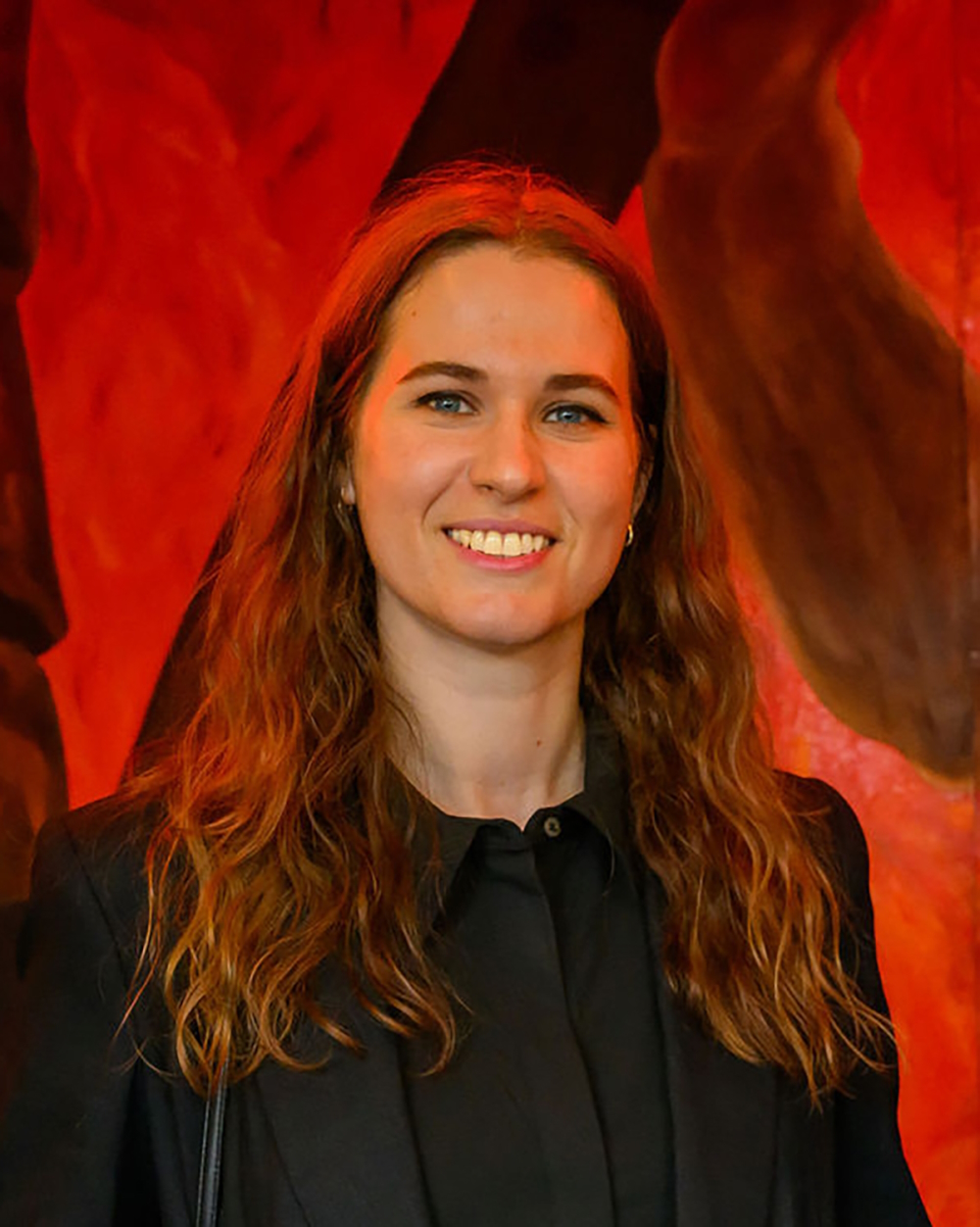
Within the sight of the Japanese coast, Rebecca Moss and the roughly 25-men crew were stranded at sea on the 68.000 tons vessel. The artist, who is based in East London and Essex, was one of four selected out of 2.000 applicants for the ‘Twenty-three days at sea’ programme. That is (according to Access Gallery as the initiator) intended to be “an extremely productive period and space – in the unconventional studio space of a cargo ship cabin – for concentrated research and the creation of provocative new ideas and works.” But the saying "If you take a trip, you will experience something!" proved its correctness one more time. “My work has been dramatically and interestingly framed by these circumstances,” Moss told artnet News via Facebook. “I am still making work—I have a performative video based practice that is oddly suited to this.” Three days after the original schedule, the trip found a happy ending in the autumn of 2016.
In 2017, Ms. Moss’ video related to this experience‚ ‘International Waters’ was exhibited. In an interview with mialondonblog, David Andrews described how, “the time spent imprisoned alongside acres of confiscated cargo containers reinforced the absurdity of global economic overconsumption and its ecological consequences, which has continued to inform her work.” This connects to the artist’s wider practice – her website describes how her work “explores notions of absurdity and precarity, and takes a variety of forms across sculpture, video, performance, installation, and participatory practice. Through humorous ideas, her work explores existential themes. A sense of movement recurs across the work, that things are in a state of change and flux. She is especially inspired by slapstick performance: for its emotional expression of feelings of instability, its lowbrow humorous associations, its sense of reciprocity between body and surroundings, and for its potential to challenge power.”
Rebecca Moss (* 1991 in Essex, UK) completed her BA in Painting at Camberwell College of Arts in 2013. In 2017, she graduated with an MA in Sculpture from the Royal College of Art. In this same year, Ms. Moss was shortlisted for The Future Generation Art Prize with Pinchuk Art Centre, Kyiv (Ukraine). In 2022, she participated in the Constellations programme, exploring the expanded field of public art, with UP Projects (one of the UK’s leading public art organisations), Flat Time House in South London (studio home of John Latham/1921-2006, recognised as one of the most significant and influential British post-war artists) and with the Liverpool Biennial Of Contemporary Art.
On the occasion of her first solo institutional exhibition in the UK Rebecca Moss was interviewed by Katharine Stout, Director of Focal Point Gallery. Some quotes from their talk on fpg.com allows a deeper insight into the inner driving force of an artist, who is an admirer of the silent movies by legendary slapstick comedy performer Buster Keaton (1895-1966). Moss describes: „There’s a lot I draw upon from slapstick performance for my ideas. There’s this particular trope in slapstick of getting one’s head stuck between railings. I think the physicality of getting stuck interests me a lot, and it really connects to the container ship situation. What it felt like to be stuck and the humour of that, but also the anxiety“ [...] The role of humour and the way it interacts with something darker or more serious, is something that I’m interested in [...] Comedy is nonverbal performance, It’s very expressive, very powerful. With my work, I would connect it to feminist performance as well emphasizing the body and connecting that to the landscape, [...] I think that with my work, it’s a similar process of trying to connect an emotional state, an emotional expression with something in the landscape by contriving a situation where things can tip one way or another. [...] Movement is a really important thing for me, and things not feeling static. I have an ongoing process of going for walks and paying attention to things, but I don’t storyboard or anything like that. It’s more that I bring these two elements, myself and the landscape, into collision in some way, and seeing what happens. I can usually imagine what outcome I want to happen, but sometimes the elements of surprise and disappointment can make for stronger work. So I’m up for embracing the element of chance. I put myself in the same position as the viewer when they watch my work in that I don’t quite know what’s going to happen in those scenarios - I think that’s really important to relinquish some element of control.“
Rebecca Moss lives and works in East London and Essex.
Interview September 2025
Out of the comfort zone: art with a humorous, surprising approach
INTUITION/IMAGINATION
?: How does intuition present itself to you – in form of a suspicious impression, a spontaneous visualisation or whatever - maybe in dreams?
I think my work is often an outburst of a certain anarchic energy that I carry within me. I find this release exhilarating and necessary.
?: Will any ideas be written down immediately and archived?
I keep sketchbooks of ideas and inspiration for forms that my works can take. I often think of these as ‘half-ideas’ where I know there is a seed of inspiration for a potential work, but it needs the right opportunity, time, place and context to be further developed.
?: How do you come up with good or extraordinary ideas?
I think there is a process of digging deep within myself to access a strong sense of existential questioning and absurdity, and being aware of the world around me and the ‘rules’ of a particular context. My work is then about twisting those rules and conventions of a space using absurdist logic. The ideas are often site-responsive, so I am looking for qualities in my external surroundings that either support or resist my inner world.
?: Do you feel that new creative ideas come as a whole or do you get like a little seed of inspiration that evolves into something else and has to be realized by endless trials and errors in form of constant developments until the final result?
Sometimes entirely fully-formed ideas pop into my head out of nowhere, and all I need to do is execute them. I am not a medium-specific artist, and I am quite conceptually-driven, but the forms my work can take are extremely important considerations. I also really believe in the potential for emotional expressiveness through material. This often leads me to work sculpturally with found objects, and cheap props and costumes, as they feel rooted in a particular culture that I grew up with. They signify a set of social values that can become political in certain situations.
?: What if there is a deadline, but no intuition? Does the first fuel the latter maybe?
Deadlines force me to commit to the best ideas and get rid of what is non-essential.
INSPIRATION
?: What inspires you and how do you stimulate this special form of imaginativeness?
I’m interested in how these experiences of absurdity can bring people together across cultures and class hierarchies. I am inspired by moments where the nonsensical side of life reveals itself, when the irrational Universe resists our desire for meaning. Albert Camus talks about moments of lucidity where the absurd man is defamiliarized from his routine and ‘the stage sets collapse.’ I also think that we live in an economic system that doesn’t make sense for most people, and so I am interested to use humour to show the irrationality of man-made systems.
?: How do you filter between ideas that are worthwhile pursuing and bad ones that you just let go of?
I feel especially excited by ideas when I find the joke behind them amusing, when I feel like I am taking a risk, and especially if I am not entirely sure what the outcome will be. Even if I have clarity about the form an idea may take, there is often a sense of my contrived scenario meeting the unpredictable qualities of the outside world, a relinquishing of total control.
?: Does an idea need to appeal to you primarily or is its commercial potential an essential factor?
It is always the quality of the idea that comes first.
?: Do you revisit old ideas or check what colleagues or competitors are up to at times?
I have lots of ‘old ideas’ resting in my head, waiting for the right opportunity to manifest in a particular context and time. And I am more interested in collaboration than competition, so I am always looking out for opportunities to work in exciting ways with others.
CREATIVITY
?: What time or environment best suits your creative work process — for example, a time and place of tranquility or of pressure?
My work is often site-responsive, so I spend some time examining a particular place and thinking about a gesture or intervention that would draw particular attention to elements of its context.
Which path do you take from theory or idea to creation?
I think about the presence of my body in the place, whether I do or don’t belong and how I feel in it. I think about the rules of the space, and whether I agree with them or whether they can be twisted or wobbled. I think about who might encounter the work, who I am making it for (or against.) From this I will think about forms, materials and approaches that spring to mind when I think about what I might make.
?: What’s better in the realization process — for example, speed and forcing creativity by grasping the magic of the moment or a slow, ripening process for implementation and elaboration?
The art world operates at breakneck speed, and I have become accustomed to producing work at a relatively fast pace. However, I believe that as much as possible, it is essential that the urgency behind this pace comes from a need to make the work itself (emotional, social, political or intellectual needs for example) and bring the ideas into reality, rather than working to suit the industry.
?: How important are self-doubt and criticism by others during such a process?
Informed criticism by others can be useful if it helps to solve problems or suggest new possibilities. Self-doubt can be trickier if you get stuck in your own head, but this is perhaps the place where artists need to go to grow, where your feet aren’t quite touching the bottom of the pool, and you’re not quite sure if you can swim.
?: Is it better to be creative on your own, to trust only your own instincts, or to work in a team?
I have great experiences of both, and it is context-dependent. I have a strong sense of what I want to express and say with my work, but I also love working with skilled and talented collaborators who can lift my work into unforeseen directions. Sometimes the sense of absurdity grows with the scale of the team and the size of the operation, which I enjoy.
?: In case of a creative block or, worse, a real failure, how do you get out of such a hole?
Failure is a necessary aspect of making art, as it is inevitable if you take risks. I think if you work too hard at an idea and try to force it, it is important to take a step back and leave it alone, to return to it with a fresh mind at a later date.
?: Should a creative person always stay true to him- or herself, including taking risks and going against the flow, or must the person, for reasons of commercial survival, make concessions to the demands of the market, the wishes of clients and the audience’s expectations?
I think there should be no rules about how an artist should be and how they should navigate these situations. However, important questions would be - why is the artist motivated to make the work, and who is it for? Does it have a social function? Personally, I think a lot about my audience when I make my work. I imagine the work as functioning like an intimate conversation between myself and them. Art is very special in this way, it can connect artist and audience in non-verbal but powerful encounters based on a sense of a shared lived experience.
?: How are innovation and improvement possible if you’ve established a distinctive style? Is it good to be ahead of your time, even if you hazard not being understood?
I think that fresh ideas and new approaches are always a good thing. Even if we have developed a particular way of working, you have to keep pushing it so you don’t repeat yourself.
?: When does the time come to end the creative process, to be content and set the final result free? Or is it always a work-in-progress, with an endless possibility of improvement?
The process is always ongoing, but punctuated by moments of release when the work goes into an exhibition, is shared on social media or is sold. The moment when a work you’ve privately sat on for months, or even years, enters the public domain, is daunting but exhilarating.
?: How does artificial intelligence change human creativity? And do you? Would will you use it at all?
I haven’t yet, but I wouldn’t be against using it in my work. I would like to think it could positively shape society, rather than reflecting back our inequalities.
SUCCESS
“Success is the ability to go from one failure to another with no loss of enthusiasm.” Do you agree with Winston Churchill‘s quote?
If we return to the image of Sisyphus, doomed to forever push a boulder up a hill for it to roll back down to the bottom, we might think of failure as being a necessary part of lived experience – an endless, futile striving. As we are all joined in this condition, there is joy to be found in sharing our struggling endeavours. I would therefore agree with this quote, as the ability to stay enthusiastic in the face of adversity is really admirable. It is in a state of dogged enthusiasm that we choose to live another day.
?: Should or can you resist the temptation to recycle a ‘formula’ you're successful with?
Ideally the ‘formula’ would be a way of working that had intuitively grown out of a lived experience, rather than an affectation, like a costume to sometimes put on. So long as the artist keeps connecting to the things that internally drive their practice and make their work in response to being alive in this time and place, I don’t think there is a danger of becoming formulaic, as life doesn’t stay still.
?: Is it desirable to create an ultimate or timeless work? Doesn’t “top of the ladder” bring up the question, “What’s next?” — that is, isn’t such a personal peak “the end”?
As in music, there will be some artworks that seem to transcend their cultural and temporal context and resonate with wide audiences across time. Perhaps artworks that speak to universal themes about human experience, rather than a specific issue in a particular moment, will have this longer lasting power. However, I think there is a value and importance to both approaches (general and specific), and I do believe in the power of art to affect social change.
MY FAVOURITE WORK:
I would like to talk about a project I recently completed with Museum Tinguely in Basel. It was an art ghost train, to celebrate the 100th birthday of Jean Tinguely. It was a fully functioning ghost train ride from the 1930s, and visitors had to sit in carts to experience artworks along a track. I worked with a Swiss artist Augustin Rebetez, and we made a collection of work for the two storey ride. I was proud of this work because of the way it dismantled hierarchies and brought the most formal and intimidating of visitors back to their childhood selves. As Swiss presidents and international museum directors emerged through the doors at the end of the ride, they were smiling and startled by the experience that they had just had. The disarming quality of this project, its accessibility to the general public, and its imaginative way to experience art, was an incredibly enjoyable experience.
